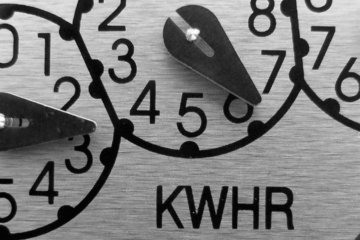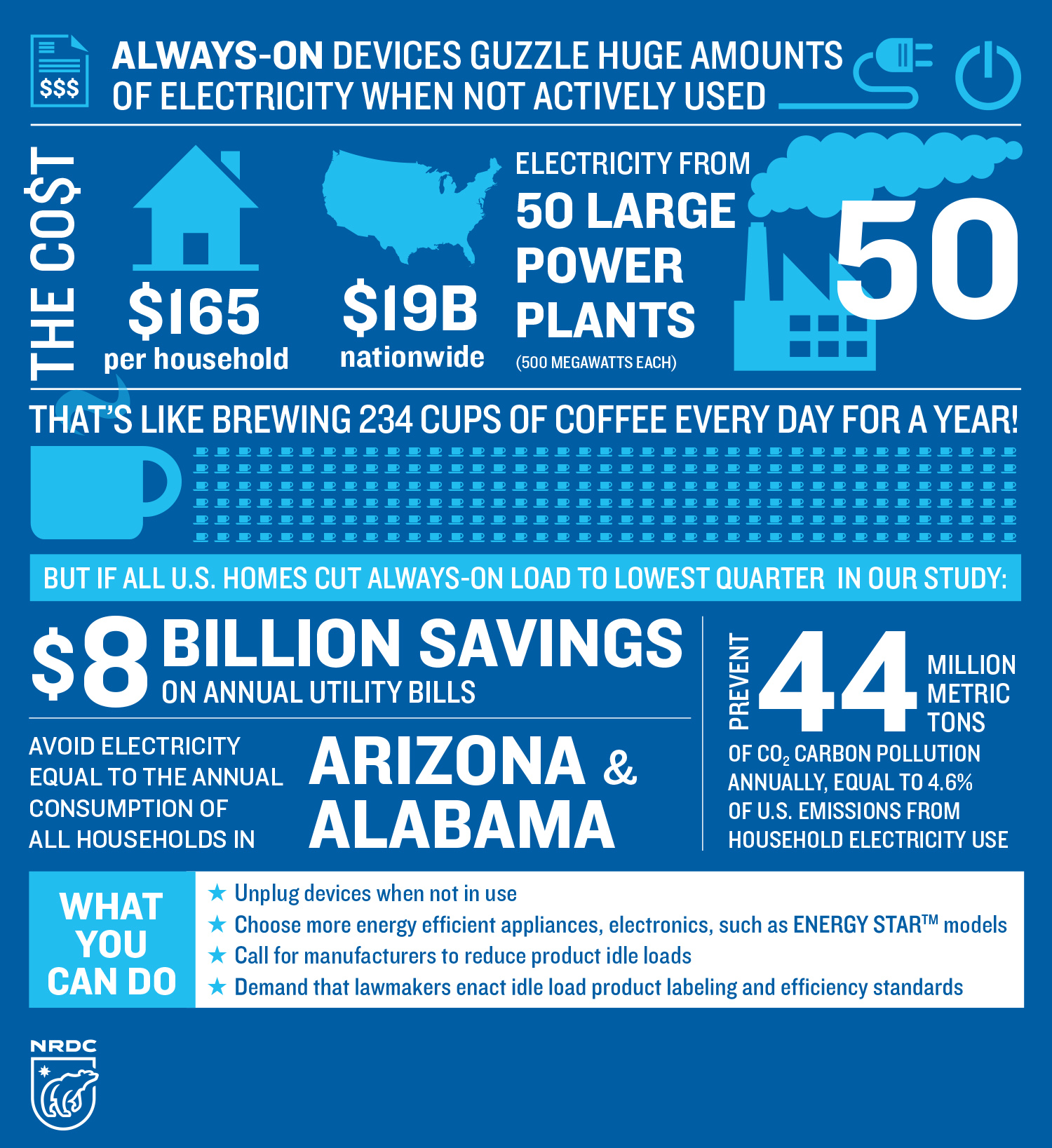
Energy Vampires: Pulling the Plug on Idle Electronics (Op-Ed)

Pierre Delforge is the director of high-tech energy efficiency for the Natural Resources Defense Council (NRDC). He contributed this article to Live Science's Expert Voices: Op-Ed & Insights.
Nationwide, "always on" electrical appliances and electronic devices in off, standby or sleep modes cost the average U.S. household about $165 per year — and some households, up to $400 — adding up to about $19 billion.
That's equal to the electricity generated by 50 large power plants, or at a more human scale, like brewing 234 cups of coffee every single day for a year. And, this always-on, or idle, load is putting about 105 million metric tons of carbon dioxide into the air for no good reason.
Since the 1980s, the U.S. Department of Energy (DOE) and U.S. Environmental Protection Agency (EPA) have implemented efficiency programs and labels, focusing on appliances that used the most energy, such as furnaces, water heaters and refrigerators. The programs have been remarkably effective at cutting energy waste and sparking innovation: For example, new clothes washers use 75 percent less energy, and new dishwashers use half as much, as they did in 1987. Refrigerators today use only a quarter of the electricity of their 1970s counterparts while offering 20 percent more storage — and costing half as much. [Slay Some Energy Vampires]
Meanwhile, the number of gadgets in American homes and offices has proliferated, previously purely mechanical appliances now have electronic displays and controls, and many devices are connected to the Internet 24/7 — all causing a rise in demand for electricity to power otherwise idle devices. Now it’s time to tackle that energy waste, an issue that emerged along with the technology.
Shifting out of idle
I recently helped produce the NRDC report "Home Idle Load: Devices Wasting Huge Amounts of Electricity When Not in Active Use" to address this longstanding issue.
Our study — conducted in partnership with Home Energy Analytics and the Stanford Sustainable Systems Lab — used three separate data sets to assess the use of always-on devices and their impact on consumer utility bills: smart-meter data from 70,000 northern California homes; smart-meter and related information from 2,750 San Francisco bay area homes; and a detailed in-home audit of 10 San Francisco bay area homes. The results showed that on average, more than one-fifth of the homes' electricity consumption — 23 percent — was going to power devices that weren't being actively used.

However, if appliance manufacturers, policymakers and consumers all get on board to control the "energy vampires," the nation will see significant reductions in idle load. In fact, if all U.S. households reduced their idle load to the level already achieved by one-quarter of the homes in NRDC's study, the households would save $8 billion on annual electricity bills, avoid 64 billion kilowatt-hours of electricity per year (equivalent to the output of 21 power plants), and prevent 44 million metric tons of carbon pollution from reaching the atmosphere.
While consumers can take some action to reduce their idle load, ultimately it's up to the manufacturers to design all products with the goal of minimizing idle power so that consumers don't have to worry about always-on electricity waste and can purchase any device trusting that it will work efficiently. The way to ensure this would be for the DOE to implement idle load efficiency standards.
Although the United States has minimum efficiency standards that cover idle load consumption for some appliances, such as microwave ovens, most products are not yet covered. With revised — and in some cases, new — standards, there would be no need for consumers to think about this electricity waste, the same way federal regulatory mechanisms ensure that vehicles are safe to drive and foods are safe to eat. [New Agreement Slashing Set-Top Box Energy to Save $1 Billion Annually (Op-Ed)]
Steps toward minimizing idle load will only be more critical in the future, given the constant stream of new products that now feature digital controls and displays — such as dishwashers, washers and dryers — and more products coming into the marketplace that include Internet connectivity. As appliances and electronic devices get smarter, manufacturers and policy makers need to do the same.
Eliminating energy waste also decreases the number of fossil-fuel-burning power plants necessary to generate electricity, thereby reducing harmful air pollutants and carbon emissions. Given that U.S. power plants account for nearly 40 percent of the nation's carbon pollution, smarter energy use can have a measurable impact on overall emissions. In addition, optimizing energy use helps eliminate the need to build new expensive energy infrastructure, saving utilities and their customers money. And as the international climate talks are set to resume in December, a plan to control idle load energy waste could help the United States meet global emissions targets.

What you can do now
Until manufacturers design all products to minimize always-on loads, consumers can take some action to mitigate the impact on their utility bills.
The first and most obvious step toward minimizing the idle-load effect is to unplug devices when they are not in use, such as during the night or when the home's occupants are away for any lengthy period.
Another option is to plug energy vampires, such as game consoles, into smart power strips, which employ timers and sensors that turn devices off completely until their next use. Electronics retailers sell them, and some local utilities offer free smart power strips as part of home energy audits. Others provide discounts, or even rebates on utility bills, to customers who buy and use them (check with your local utility).
Consumers also should buy the most energy efficient appliances, electronics and other devices, always looking for the EPA's ENERGY STAR® label that identifies the highest-performing models.
Not sure how much vampire energy is being gobbled in your home? NRDC has provided a step-by-step home "idle load" action guide that can help you identify, measure and reduce vampire load consumption.
Follow all of the Expert Voices issues and debates — and become part of the discussion — on Facebook, Twitter and Google+. The views expressed are those of the author and do not necessarily reflect the views of the publisher. This version of the article was originally published on Live Science.
Sign up for the Live Science daily newsletter now
Get the world’s most fascinating discoveries delivered straight to your inbox.










